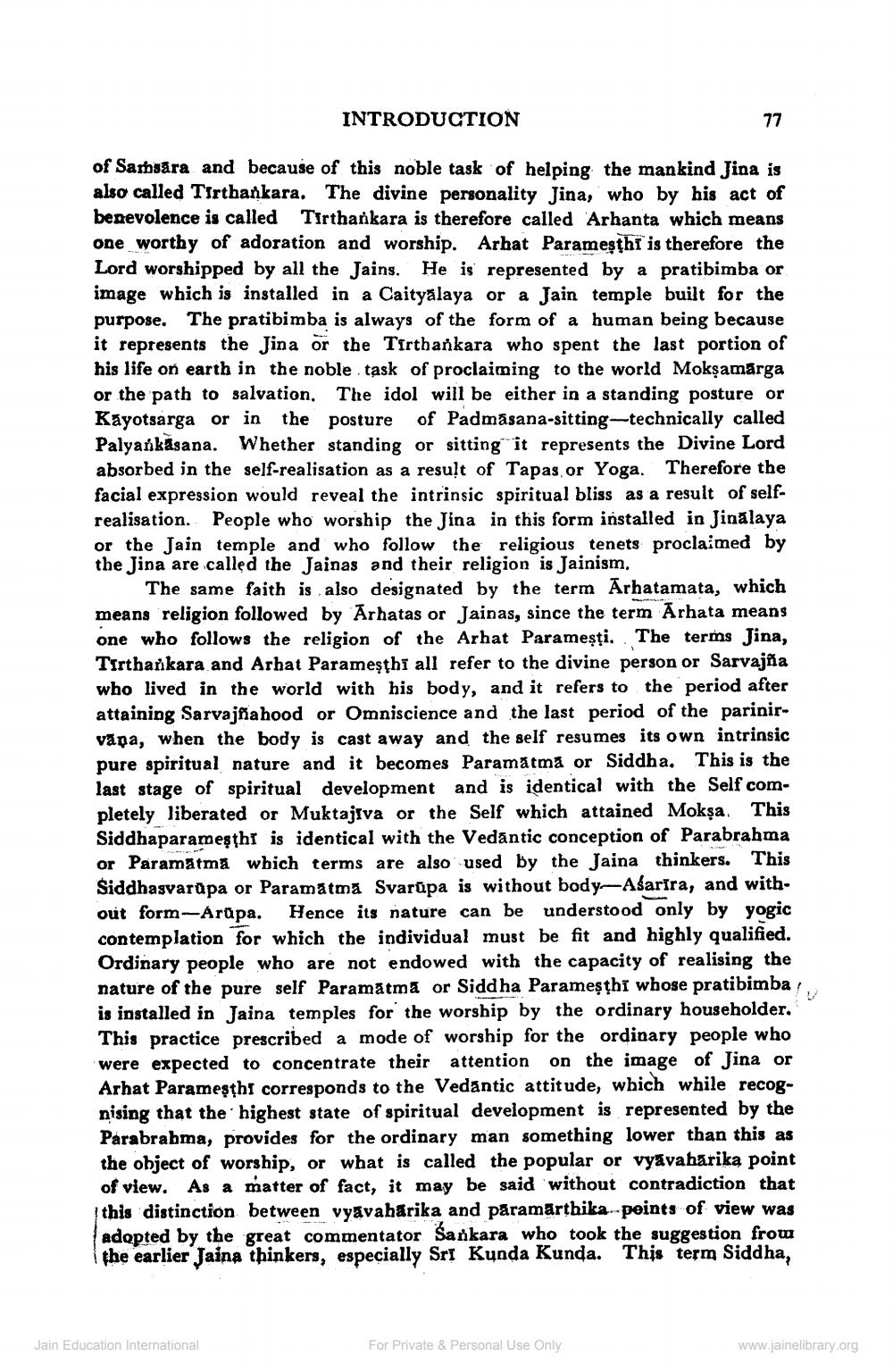________________
INTRODUCTION
of Samsara and because of this noble task of helping the mankind Jina is also called Tirthankara. The divine personality Jina, who by his act of benevolence is called Tirtharikara is therefore called Arhanta which means one worthy of adoration and worship. Arhat Paramesthi is therefore the Lord worshipped by all the Jains. He is represented by a pratibimba or image which is installed in a Caityalaya or a Jain temple built for the purpose. The pratibimba is always of the form of a human being because it represents the Jina or the Tirthankara who spent the last portion of his life on earth in the noble task of proclaiming to the world Mokşamärga or the path to salvation. The idol will be either in a standing posture or Kayotsarga or in the posture of Padmasana-sitting-technically called Palyankasana. Whether standing or sitting it represents the Divine Lord absorbed in the self-realisation as a result of Tapas or Yoga. Therefore the facial expression would reveal the intrinsic spiritual bliss as a result of selfrealisation. People who worship the Jina in this form installed in Jinalaya or the Jain temple and who follow the religious tenets proclaimed by the Jina are called the Jainas and their religion is Jainism.
The same faith is also designated by the term Arhatamata, which means religion followed by Arhatas or Jainas, since the term Arhata means one who follows the religion of the Arhat Parameşti. The terms Jina, Tirthařkara and Arhat Parameşthi all refer to the divine person or Sarvajña who lived in the world with his body, and it refers to the period after attaining Sarvajña hood or Omniscience and the last period of the parinirvāpa, when the body is cast away and the self resumes its own intrinsic pure spiritual nature and it becomes Paramātma or Siddha. This is the last stage of spiritual development and is identical with the Self completely liberated or Muktajiva or the Self which attained Mokşa. This Siddhaparameşthi is identical with the Vedāntic conception of Parabrahma or Paramātmā which terms are also used by the Jaina thinkers. This Siddhasvarūpa or Paramatma Svarūpa is without body-Ašarira, and with. out form-Arūpa. Hence its nature can be understood only by yogic contemplation for which the individual must be fit and highly qualified. Ordinary people who are not endowed with the capacity of realising the nature of the pure self Paramātma or Siddha Paramesthi whose pratibimba! is installed in Jaina temples for the worship by the ordinary householder. This practice prescribed a mode of worship for the ordinary people who were expected to concentrate their attention on the image of Jina or Arhat Paramesthi corresponds to the Vedantic attitude, which while recognising that the highest state of spiritual development is represented by the Parabrabma, provides for the ordinary man something lower than this as the object of worship, or what is called the popular or vyāvaharika point of view. As a matter of fact, it may be said without contradiction that this distinction between vyāvaharika and paramarthika peints of view was adopted by the great commentator Sankara who took the suggestion from the earlier Jaina thinkers, especially Sri Kunda Kunda. This term Siddha,
Jain Education International
For Private & Personal Use Only
www.jainelibrary.org




